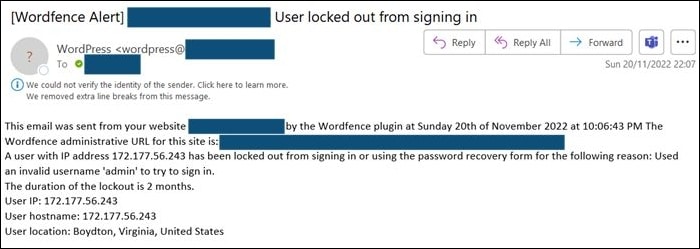The Basics of Cyber Security – A quick look at OSINT and Redacting

We have all seen redacted documents – even if it is just in a movie a TV programme or on this blog, obscuring information that someone does not want you to see. Redacting documents has a serious part to play in national and business security.
The example at the top of this page is an email that I used in a blog post a few weeks ago and obviously it has sensitive information in it, that I did not wish to share with you – or a hacker trying their hand at a little OSINT against me, Smart Thinking or CyberAwake.
OSINT
OSINT = Open Source Intelligence. This was one of my favourite parts of the cyber security course at university and I have written about it here. Basically it is creating a compromising picture of your target from combining information that is available in the public domain or easily obtainable from legitimate sources. The obvious place that people and organisations say too much is social media. A less obvious source is what is given away when a company sends out an email. An esoteric source is taking an image of sufficient quality that a hacker online can enlarge and use the QR code on the ID tag to gain entry to a restricted site. The easiest is listening to someone on the phone in a coffee shop carefully say out loud their password, complete with phonetic alphabet and slowly stated characters and numbers.
Redacting
Back to redacting – the familiar black blocks, although I used blue, obscuring secret information. In the days before computers – and possibly still today – it required the use of scissors, scalpels, tape and black markers. Today of course there is an app for that and that is where the issues start. Most court, government and business redacting is being done in software, particularly PDF software where black blocks are placed over the secret text. The underlying characters are not destroyed as with the traditional method, and although to the eye the information looks to be beyond recovery research from the University of Illinois has found that in many cases it is not. The researchers discovered a number of techniques for recovering redacted information which included simply copying and pasting and a new attack they developed themselves to recover names from a redacted document. (Bland and Levchenko, 2022)
Redacting Mitigation
There is a fast workaround for this:
- Redact the document in software
- Print the redacted document
- Scan or photograph the printout into an electronic document for distribution
- Or don’t use a PDF tool use another more secure technique

Next
With the holiday season approaching some of us will be able to work from home, so I will be sharing some seasonal cyber security advice.
Clive Catton MSc (Cyber Security) – by-line and other articles
References
Bland, M., Iyer, A., & Levchenko, K. (2022). Story Beyond the Eye: Glyph Positions Break PDF Text Redaction. arXiv preprint arXiv:2206.02285.


